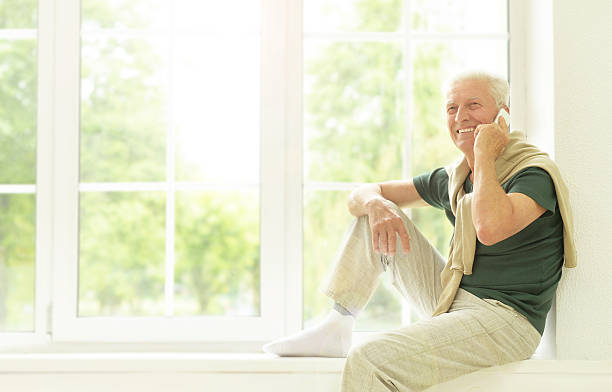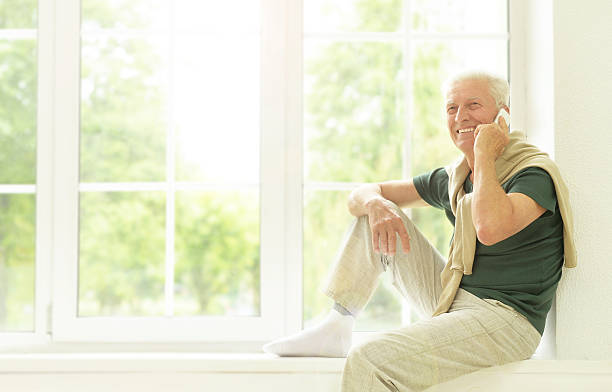
Aging gracefully means maintaining independence, comfort, and confidence in everyday life. For seniors with health concerns, however, achieving that balance requires extra care and thoughtful planning. The risk of falls, medication errors, or medical emergencies can increase with age, but these challenges don’t have to limit freedom. By building safer routines, integrating supportive technologies, and involving family or caregivers, seniors can enjoy their golden years with peace of mind and improved well-being.
Understanding Senior Health Risks
Every senior faces unique health challenges depending on their age, lifestyle, and medical history. Some may deal with chronic conditions like diabetes, arthritis, or heart disease, while others face mobility issues or mild cognitive decline. Even small health fluctuations can affect safety slower reflexes, reduced vision, or balance issues can lead to avoidable accidents.
One of the most effective ways to mitigate these risks is through structured routines. Predictable, organized daily habits reduce confusion, help maintain medication schedules, and promote both physical and mental stability. Moreover, integrating modern safety tools can add another layer of protection. For instance, using an Emergency contact QR code sticker on personal belongings or mobility aids allows first responders or caregivers to instantly access vital medical and emergency contact information. This small addition can make a life-saving difference in moments when communication is difficult, ensuring that the right help is provided promptly.
Role of Technology in Senior Safety
Technology plays an increasingly vital role in helping seniors live independently while staying safe. Devices like smartwatches with health monitoring features, fall detection systems, and voice-activated assistants allow seniors to remain connected even when alone. These innovations not only enhance safety but also give families reassurance that their loved ones are being looked after.
Medical alert systems and QR-based identification tools have become particularly useful. They store essential medical details such as allergies, blood type, and emergency contacts that can be accessed with a quick scan. Such tools bridge the communication gap between seniors and medical professionals during emergencies. Additionally, home automation systems like motion-sensor lights, smart thermostats, and reminder apps simplify daily routines while preventing accidents caused by forgetfulness or mobility issues.
Technology doesn’t replace human care, but it strengthens it. For families with aging parents living alone, these digital solutions offer peace of mind while preserving the senior’s sense of autonomy.
Building Safe and Healthy Daily Routines
Designing a safe daily routine for seniors begins with understanding their specific health conditions and environment. The goal is to create structure without stress consistent activities that promote wellness, reduce risks, and support independence.
Morning Routines:
Start the day with gentle stretching or light exercises to improve circulation and flexibility. A stable morning schedule can help regulate energy and mood. Seniors should take prescribed medications after breakfast to avoid nausea, and reminders (digital or manual) should ensure no dose is missed. Hydration is equally important, as dehydration can lead to fatigue or dizziness.
Daytime Routines:
Daytime activities should combine engagement and movement. Simple walks, reading, or social activities stimulate the mind and body. Meals should be nutrient-dense and scheduled at consistent times. Seniors with chronic conditions like diabetes benefit from balanced meals to maintain blood sugar levels. Safety at home should also be reviewed remove clutter, secure loose rugs, and ensure that commonly used items are within easy reach.
Evening Routines:
Evenings should focus on relaxation and winding down. Seniors should avoid caffeine late in the day and keep lighting soft to signal the body for rest. Medication taken at night should be clearly labeled, and reminders or pill organizers can prevent errors. Ensuring a restful sleep environment helps maintain overall health and emotional balance.
Family and Caregiver Involvement
No safety plan is complete without strong communication among seniors, families, and caregivers. Family members should stay informed about the senior’s medical conditions, medication schedules, and daily habits. Regular check-ins, whether in person or virtual, help monitor health changes and ensure routines remain effective.
Caregivers should also be trained to respond quickly during emergencies. Having access to health information through QR-coded tools or medical IDs ensures that the right steps are taken immediately. Beyond physical safety, emotional security matters too. Seniors feel more confident and valued when they know someone is consistently available to help. Encouraging independence while offering support strengthens both safety and self-esteem.
Family members can also assist in setting up technology installing reminder apps, syncing medical alerts, or updating emergency contact data. Even simple tools like shared calendars help everyone stay aligned with medication timings, appointments, and social activities.
Preventing Emergencies Before They Happen
The most effective safety strategy is prevention. Many household accidents involving seniors occur due to small oversights wet floors, poor lighting, or medication confusion. A few preventive steps can significantly reduce these risks:
- Home Safety Modifications: Add non-slip mats, grab bars, and motion-sensor lights. Keep pathways clear and ensure that furniture provides stable support.
- Medication Management: Use labeled pillboxes and alarms to prevent missed or double doses. Periodically review medications with a healthcare provider.
- Routine Health Checks: Encourage regular doctor visits to monitor blood pressure, glucose, and heart rate. Early detection of issues prevents emergencies.
- Emergency Preparedness: Keep emergency contacts easily accessible and updated. QR-coded labels or bracelets ensure that even if a senior is unable to communicate, help arrives efficiently.
Preventive care is about creating consistency and foresight. When seniors follow structured routines and families stay engaged, the likelihood of accidents drops dramatically.
Emotional and Mental Well-being
Physical safety is only half the equation emotional well-being is equally important. Seniors thrive on connection, purpose, and self-sufficiency. Feelings of isolation or dependency can lead to anxiety or depression, affecting overall health. Encouraging hobbies, volunteering, or spending time outdoors fosters mental clarity and happiness.
Establishing routines that incorporate social interaction is vital. Whether through regular phone calls, group activities, or community programs, staying connected enhances emotional resilience. Family members should celebrate achievements and progress, no matter how small. This positivity helps seniors maintain motivation and confidence in managing their routines.
Balancing Safety and Independence
It’s important to remember that safety measures should empower, not restrict. Seniors value their independence, and overly restrictive routines can cause frustration. The best approach is one of balance offering guidance while allowing choice. For instance, rather than dictating every activity, provide options and involve them in decision-making.
Smart technologies can be integrated subtly so they don’t feel invasive. Devices can be designed to blend with daily life, offering protection without constant reminders of vulnerability. The goal is to build a life that feels natural yet safe a rhythm that enhances rather than disrupts daily living.
Conclusion
Building safer routines for seniors with health concerns is a thoughtful process that blends structure, compassion, and innovation. It’s about creating a lifestyle where safety coexists with freedom, and technology complements human care. With tools like medical alert systems, smart home devices, and QR-coded identification solutions, seniors can navigate their days with confidence and independence.
Families and caregivers play a key role in maintaining these systems, offering reassurance and adaptability as health needs evolve. Ultimately, a safe routine isn’t just about preventing accidents it’s about promoting dignity, comfort, and peace of mind. By combining preparation, awareness, and modern solutions, we can ensure that seniors live not only longer but better, surrounded by security, respect, and love.



